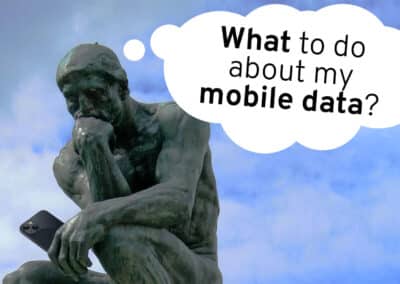
Updated: Mar 23
With the rise in work-from-home and the mobile worker comes an increased desire to find a better way to manage mobile devices. Unfortunately, the promises of the MDM/UEM hype may not all be fulfilled.
Here are some MDM myths – previously covered in our MDM Facts & Myths webinar – that we commonly encounter as well as the facts that disprove them.
Myth #1: MDM disrupts personal privacy
Fact: Mobile Device Management solutions each feature a set of tools for developing, securing, and managing mobile devices. A common misconception is that these MDM features are used to watch over/spy on employees. In most cases, however, MDM features are only meant to simplify deployment, ensure security policies are setup and followed, and streamline ongoing management of devices.
In fact, MDMs have very little ability to actually see what a user is doing on a device other than what apps they have installed.
Myth #2: MDMs can tell where you’re surfing
Fact: A common misconception is that MDMs include traffic and data monitoring features. Many companies desire these features in order to see where people are going on the web or how much data they are consuming, but it is important to note that add-on tools may be needed to support such attributes. Further, when a company purchases software to monitor this traffic, it is mainly used to block devices from going to “bad sites” or sites the company deems unproductive (by policy).
Myth #3: MDMs eliminate security threats
Fact: Many think, “now that we have an MDM we don’t need to worry about malware, viruses, or other security threats.” The truth is that different MDMs provide different levels of security. Some MDM vendors provide additional security, but not all of them. Again, the MDM can help reduce security threats in that it can enforce device security policies, but the scope often does not include what is known as “Mobile Threat Defense.”
Myth #4: MDMs provide enhanced data leakage protection
Fact: Many MDMs can, to some extent, prevent the sharing of corporate data via cut-and-paste or file sharing. However, based on specific security requirements, additional products/add-ons are often necessary.
Myth #5: MDM services can be bypassed
Fact: In a corporately owned device with Device Enrollment Program (DEP) activated, MDMs are deeply installed into the device. On the other hand, in a BYOD (Bring Your Own Device) scenario, the user does have the ability to turn off or unsubscribe to certain features. This is, fortunately or unfortunately, core to the difference between user controlled and company supervised devices.

If we didn’t cover a myth that you are curious about or if you would like more information on this topic, please contact [email protected] and we will be glad to help.



